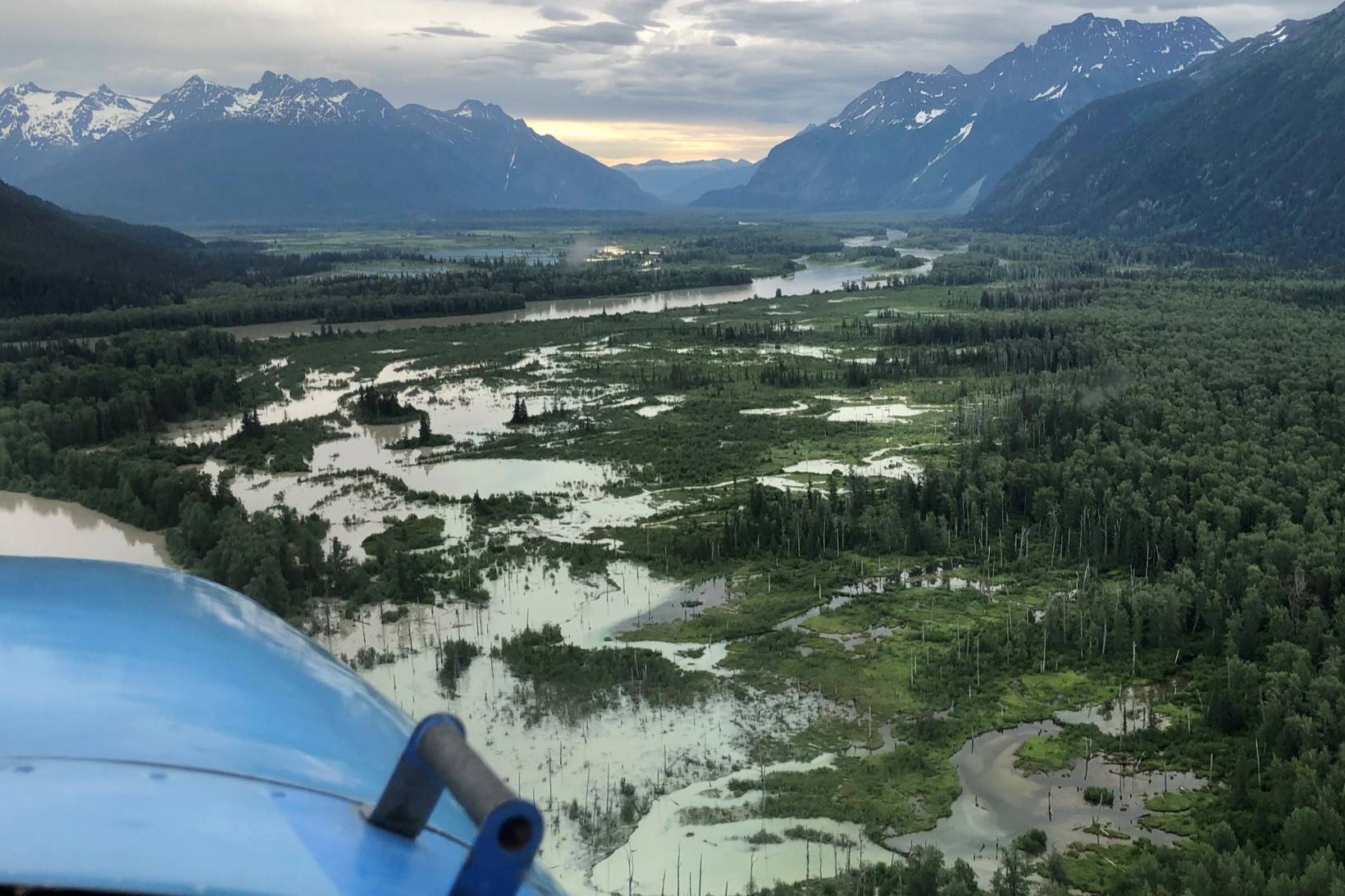Flood warnings across Southeast Alaska have been lifted by the National Weather Service as flood waters, some of which reached record highs, begin to recede.
“Water levels are already receding as we speak,” said Greg Spawn, meteorologist with NWS Juneau. “Once the water’s gone, it’s gone.”
Flooding along the Taku River reached a record high of 45.5 feet Wednesday, Spawn said. The previous record of 45.1 feet was set in 2004. Pictures from the area posted to social media showed damaged structures along the river and flooded properties.
A substantial period of warm weather led to a significant build-up of ice melt at the Lake No Lake glacial dammed lake, according to Spawn, and water began flowing into the Taku River on June 29. River levels reached their high point at roughly 11 a.m. Wednesday, NWS Juneau posted on social media, and experts had expected the flooding to continue through July 4.
Flooding events like this are extremely quick and abrupt, Spawn said, noting that flood advisories on the Chilkat and Stikine Rivers were lifted as well.
Capital City Fire/Rescue are working with the Alaska State Troopers and the weather service in case of emergency, but CCFR Chief Rich Etheridge said Thursday there were no calls for service and there was no need to move past the pre-planning stage.
Last year, water on the Taku River reached 42.5 feet, Spawn said, not enough to be considered a flood. Flooding on the Taku starts at 43 feet, Spawn said, with 45 feet considered a major flood.
Ketchikan saw three straight days of record-high temperatures, NWS reported, reaching 79 degrees Thursday. On Wednesday, NWS reported 10 Southeast Alaska locations with temperatures of 80 degrees or higher. Juneau reached 81 degrees, according to NWS, as did Hoonah and Wrangle. Whale Pass saw a high of 91.
“It’s a Southeast thing,” Spawn said, “to have a long period of good warm weather to be associated with flooding.”
• Contact reporter Peter Segall at psegall@juneauempire.com. Follow him on Twitter at @SegallJnuEmpire.

